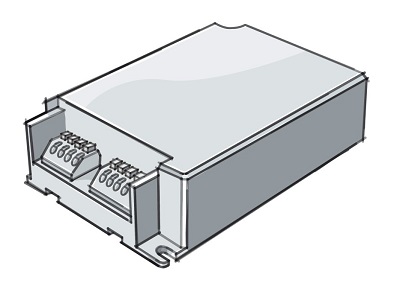A broad family of LED drivers with standardized form-factors is included in the latest specification from the Zhaga Consortium.
The Zhaga Consortium has published a new specification for LED drivers that are used in combination with separate LED modules. The introduction of standardized form-factors for LED drivers is expected to bring significant benefits for LED luminaire makers, including enhanced second-sourcing options and the ability to interchange different LED modules and drivers independently.
This new specification, Zhaga Book 13, can be downloaded from the Zhaga website (www.zhagastandard.org/books/book13) along with a White Paper that provides further explanation.
 |
|
Zhaga Book 13 LED driver. (Photo Courtesy of Zhaga) |
Book 13 provides precise specifications for the mechanical dimensions of a broad range of LED drivers. This enables the physical interchangeability of drivers in an LED luminaire. For example, Book 13 defines the maximum outer dimensions (demarcation) of the LED drivers, as well as defining the fixing points within a certain tolerance.
To enable the independent interchangeability of different drivers and modules, it is also necessary to specify the electrical interface between the module and the driver. Zhaga has chosen to reference the “LEDset1” specification from MD-SIG, an independent industry consortium, rather than write a new specification for the driver-module interface.
Broad family of drivers
To serve all applications, Zhaga has defined a range of LED driver form-factors. Taking into account the specific dimensions per form-factor, Book 13 lists a total of 78 driver categories.
Initially, Zhaga reviewed the driver types that are already in common use, and created a list of 51 categories covering different shapes, sizes and applications. In order to reduce this high level of variation, Zhaga used the existing form-factors to derive two new sets of LED drivers with standardized dimensions. The new form-factors are known as type A and type B.
Type A drivers have compact dimensions and are typically used for applications such as down- and spot-lighting. Type B drivers have slim, or stretched, dimensions and are typically used in luminaires for office and industrial applications. There are 13 sizes for the type A category and 14 for type B.
Zhaga recommends that type A and type B form-factors should be used for the design of new luminaires and LED drivers. The inclusion of existing driver categories alongside type A and type B drivers should enable manufacturers of luminaires and drivers to implement a smooth transition to the new driver types.





 CN
TW
EN
CN
TW
EN






